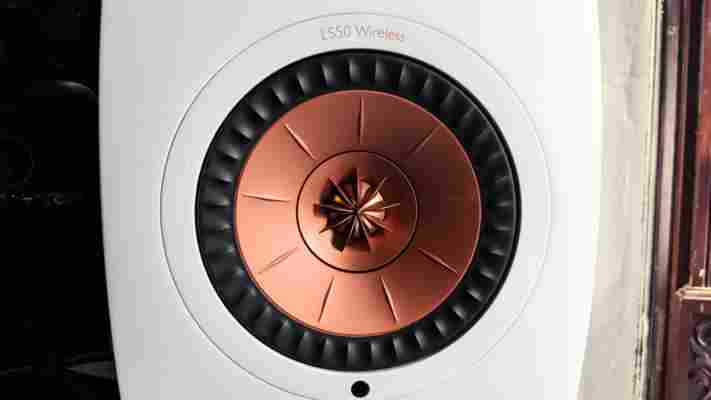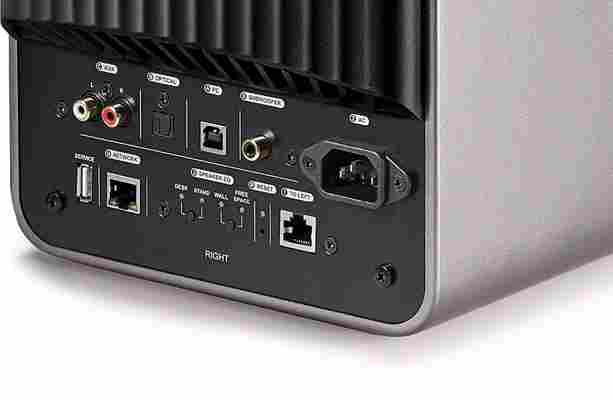Review: KEF’s LS50W are the best gateway to the world of hi-fi speakers
by Miles Warren
November 10,2022
Few hobbies exemplify the law of diminishing returns like audiophilia. Buying $500 speakers may be a clear upgrade from a pair that cost you a benjamin, but the more money you spend, the less obvious those improvements become. As you venture into the world of hi-fi, the requirement of a decent amplifier and other components only add to the sticker shock.

That’s why the KEF LS50W are so refreshing. If you’ve never invested big money in audio, it might seem absurd to call pair of $2,200 speakers a great value. But truth is, you’d likely have to either spend hundreds, if not thousands, more dollars and be an expert at matching components to get sound that’s obviously superior, not just a sidegrade.
First, some context. The LS50W are made by KEF, a British audio company that’s not particularly prominent in the mainstream, but is revered within audio circles. They’ve been around since the 60s, and they’re the real deal. The company’s flagship speakers cost over $30,000 a pair, but it even makes gear for $140,000 .
Thankfully KEF uses the knowledge acquired from designing those speakers to make products for us plebes too.
The ‘W’ in LS50W stands for wireless, but it’s a bit of a misnomer relative to the competition. In addition to power cables, the LS50W actually need to be plugged into one another via an Ethernet cable to create stereo sound.
I actually think this is a blessing in disguise, because I have yet to review a pair of wireless stereo speakers that does not drop a connection occasionally; my apartment is a potpourri of signal interference. In a couple of months of testing, the LS50W has dropped its connection exactly zero times – that’s the way I like it. In an ideal world, the speakers would have the option of working without the Ethernet cable, but I can appreciate that KEF prioritized audio reliability.
Where it is wireless is that it doesn’t have to be tethered to an amplifier or audio source like traditional speakers. It supports AptX Bluetooth (though not AptX HD, unfortunately), as well as Spotify Connect, Tidal, and Roon for higher-quality audio.
Unlike some other Hi-Fi wireless speakers – looking at you, Devialet – it also comes with analog audio ports (RCA), should you want to connect them to a traditional audio source. Say you want to use a typical 3.5 Aux cable, an RCA adapter or cable costs about 5 bucks online .
Otherwise, there’s an optical port for pristine digital audio, as well as a USB port to play sound directly from your PC. My only real wish is that KEF included a 3.5mm output as well. The speakers have a great DAC and amplifier inside them, so it would’ve been nice to be able to use that for my headphones as well, especially considering the LS50W live on my desk.


But that’s just getting greedy. The solid I/O makes the LS50W more flexible than traditional wireless speakers. Living in a small studio, I’m probably the perfect case study for this: The LS50W have pulled quadruple-duty as my TV speakers, my computer sound system, a Spotify streamer, as well as a hi-fi monitors for my digital piano.
Compare that to the Sonos Play:5, Google Home Max, or Devialet Phantom. They all have a single wired input, and while they’re okay for hooking up a smartphone or TV, they’re useless for audio creation because the speakers introduce latency to buffer the wireless stereo. The Sonos Play:5 have about 70ms of latency, for instance, which makes them useless for practicing piano or mixing tracks on a PC.
You could argue those speakers aren’t made for such users, but I’d counter that if I’m spending that much money on a speaker, I should be able to apply them to the same tasks I’d use any other speaker for.
Before I get into the sound: these speakers are beautiful,in an understated way. The white model with copper drivers I reviewed would look classy in pretty much any home, and there are a few other colorways for variety as well. The included remote matches the speaker’s body too – a nice touch. On top of the right speaker you’ll find a slim panel containing all your controls. One annoyance: the speakers don’t detect audio sources automatically, so you’ll have to remember to switch that over before changing inputs.
Moving on, the usual disclaimer applies that I haven’t heard every speaker in the world. I should also make it clear that this pair probably isn’t something you should consider if you only ever listen to music casually or just want something loud to blast at a party. While the LS50W are great for those purposes too – several guests have commented on their sound – these are speakers meant for people who actually focus on the music. Pay attention, and you’ll be handsomely rewarded.
The LS50W’s most impressive trait is its soundstage. These speakers create a sense of space and physical form that betrays your sight; a singer may seem to occupy the empty space between the left and right drivers. Few other speakers I’ve listened to, some costing thousands more, can match the way voices and instruments on the LS50W seem to have tangible mass, strewn across the Z and Y axes in addition to the X. The Devialet Phantom and Sonos Play:5 can technically reach lower than the LS50W (more on this later), but both couldn’t match the realism of KEF’s presentation.
This is in large part due to KEF’s zany-looking Uni-Q drivers. Most speakers in the category separate sound into a woofer for the mids and a tweeter for treble, spread across the speaker enclosure. The KEF’s drivers instead are combined to emit sound from a single point source, leading to more cohesive sound. It also allows them to have a much wider sweet spot than other speakers, which often degrade significantly should you shift your body just a few degrees off-center. You can read more about KEF’s Uni-Q drivers here .
Regarding detail, the mids and treble are transparently resolved. I’ve always been more of a headphone guy because speakers tend to disappoint at presenting the finest detail and sparkle, but not so with the LS50W. String instruments have noticeable texture, and you can hear the individual bounces of cymbals crashing.
This is largely true of the older, wired version of the LS50 as well, which retail for only $1,300. But to get the best sound out of those, you’d have to pair them with an expensive amp, and even then, they might now reach as low. The ‘W’ version, on the other hand, comes with its own bespoke amplifiers, tuned precisely to extend the frequency range and overall sound quality despite having identical drivers.
That allows the LS50W to reach surprisingly low for a speaker its size – a little below 40 Hz. The Devialet Phantom goes down to 16hz and the Sonos Play:5 about 30 hz, but neither sounds as effortlessly clean as the LS50W when pushed to their limits.
In particular, the LS50W is able to maintain tight bass presence in busy tracks; on the Sonos those notes would become muddy, on the Devialet they would sometimes be obscured. If you live in an apartment, 40hz is plenty of thump for almost any kind of music without annoying the neighbors too much. But you can always add a subwoofer if you need more.
The last piece of the equation is KEF’s app, which was apparently buggy at launch but has worked smoothly for me on Android. Unlike apps which allow you to tune sound with a simple EQ, the LS50W instead asks you to input details about your listening environment. Thing like how far the speakers are from your wall, whether they’re on a desk or stands, and the size of your room can significantly impact sound.
Specify a larger room, for instance, and the speakers will pump out more bass. You can pretty much use these as a makeshift EQ as well. But with none of these adjustments does sound really lose quality , it might just sound better for your particular environment.
By now I’ve written nearly 1,500 words on these speakers, but I could continue showering them with praise. If KEF could figure out a way to get these to extend to 20hz and make a few feature tweaks, they’d be pretty much perfect. I can’t wait to see what KEF comes up with next.
For now, the LS50W are among the very best speakers I’ve heard short of the five digit mark, and the best-sounding speakers I can reasonably recommend to our readers with the cash. If you’ve been looking for a clear upgrade from your mid-fi system and have $2,200 to spare, look no further.
We like some products. We don’t like others. Either way, if you buy something through our affiliate links, we get a small cut of the revenue. This isn’t a sponsored post, but for the sake of transparency, you deserve to know what’s up.
